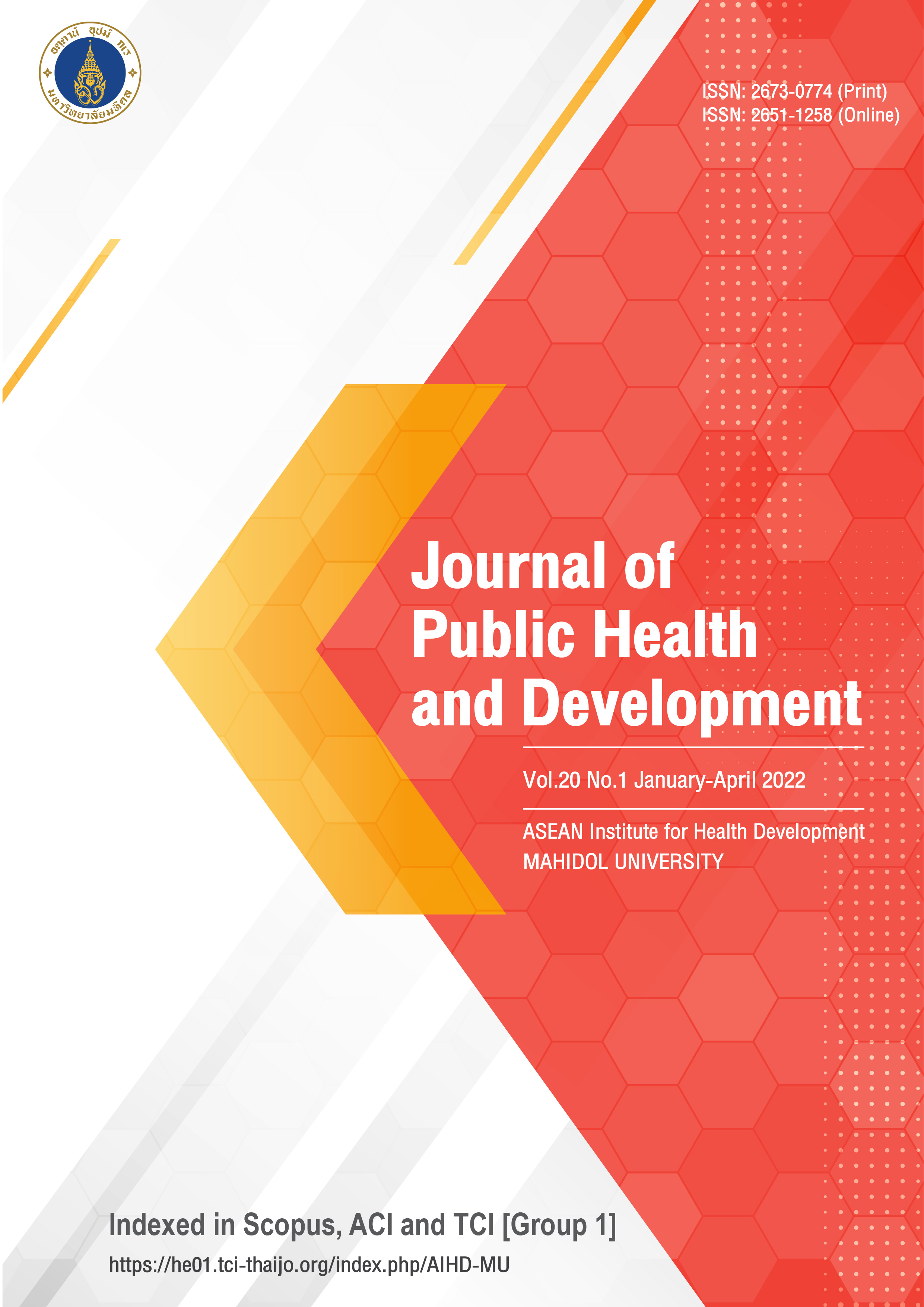Factors associated with fertility rebound in the former soviet union: case study of Armenia and Tajikistan 10.55131/jphd/2022/200103
Main Article Content
Abstract
While countries around the world have experienced a continuous decrease in fertility, in the early part of the new millennium (2005-15), almost all countries of the former Soviet Union recorded a fertility increase. Those countries had experienced a decrease in fertility after the dissolution of the Soviet Union in the 1990s, and the assumption was that economic recovery after the transition period led to a fertility rebound. In particular, a higher socio-economic condition of the household and women’s status were possible contributing factors. The investigation of factors behind the fertility rebound in this region will help policymakers in the countries with similar contexts to address demographic dynamics. Armenia recorded an increase of its total fertility rate (TFR) from 1.65 to 1.76, while Tajikistan recorded a stable TFR at 3.61 during 2000-15. Data from the 2015-16 Armenia Demographic and Health Survey (DHS) and the 2017 Tajikistan DHS were used to examine factors associated with fertility in these two countries. Contrary to the hypothesis of this study, we found that age, marriage, and the desire for more children were positively related to Children Ever Born (CEB), while being employed, having higher education, and living in a household with a better-off wealth index were negatively related to CEB in both countries. Moreover, we found that the desired number of children among women was higher than the actual fertility in both countries, implying that unmet fertility goals may be considered as a potential driver for pro-natalist policies in the low-fertility countries.
Article Details

This work is licensed under a Creative Commons Attribution-NonCommercial-NoDerivatives 4.0 International License.
References
United Nations Human Development Data. Human Development Reports (1990-2018). United Nations Development Programme. 2019.
Urinboyev R. Local government capacity in post-Soviet Central Asia. Public Policy Adm 2015;14(3),177–99. doi:10.5755/j01.ppaa.14.3.13431
Billingsley S.Second and Third Births in Armenia and Moldova: An Economic Perspective of Recent Behaviour and Current Preferences. Eur J Popul. 2011;27(2),125–55. doi:10.1007/s10680-011-9229-y
Iwasaki I, Kumo K. Determinants of regional fertility in Russia: a dynamic panel data analysis. Postcommunist Econ 2020; 32(2),176–214. doi: 10.1080/14631377.2019.1678333
Clifford, D., Falkingham, J., & Hinde, A. Through the Civil War, Food Crisis and Drought: Trends in Fertility and Nuptiality in Post-Soviet Tajikistan. Eur J Popul 2010;26(3), 325–350. doi:10.1007/s10680-010-9206-x
National Statistical Service [Armenia], Ministry of Health [Armenia], and ICF., (2017). Armenia Demographics and Health Survey 2015-16 [Internet]. Rockvile, Maryland, USA: National Statistical Service, Ministry of Health, and ICF. 2017. Available from: https:// dhsprogram.com/pubs/pdf/FR325/FR325.pdf
United Nations Department of Economic and Social Affairs, Population Division. World Fertility and Family Planning 2020: Highlights (ST/ESA/SER.A/440) [Internet]. Available from: https:// www.un.org/en/development/desa/population/publications/pdf/family/World_Fertility_and_Family_Planning_2020_Highlights.pdf
The World Bank. World Development Indicators [Internet]. 2021. Avaiable from: https:// databank.worldbank.org/source/world-development-indicators
ICPD Secretariat. Country Implementation Profile: Armenia [Internet]. 2014. United Nations Pouplation Fund. Avaiable from: https://www.unfpa.org/ICPD_AM
Statistical Agency under the President of the Republic of Tajikistan, Ministry of Health and Social Protection of Population of the Republic of Tajikistan, and ICF. (2018). Tajikistan Demographic and Health Survey 2017 [Internet]. Dushanbe, Republic of Tajikistan, and Rockville, Maryland, USA:Statistical Agency under the President of the Republic of Tajikistan(SA), Ministry of Health and Protection of Population of the Republic of Tajikistan(MOHSP), and ICF. 2018. Available from: https://dhsprogram.com/pubs/pdf/FR341/FR341.pdf
ICPD Secretarit. Country Implementation Profile: Tajikistan [Internet]. 2014. United Nations Population Fund. Avaiable from : https://www.unfpa.org/ICPD_Tj
Davis, K., Blake, J. Social Structure and Fertility: An Analytical Framework. Econ Dev Cult Change 1956; 4(3), 211-235. doi:10.2307/ 2060068
Bongaarts, J. A Framework for Analyzing the Proximate Determinants of Fertility. Popul Dev Rev 1978; 4(1):105-132. doi: 10.2307/1972149
Becker, GS. An Economic Analysis of Fetility. In: Robert GB. ed. Demographic and Economic Change in Developed Countries. Colombia University Press; 1960. p. 209-40.
Easterlin RA. On the Relation of Economic Factors to Recent and Projected Fertility Changes. Demogr 1966;3(1),131-153. doi:10.2307/2060068
Friedman DA, Hechter M, Kanazawa S. Theory of the Value of Children. Demogr 1994;31(3),375–401. doi: 10.2307/2061749
Easterlin R.A. (1975). An Economic Framework for Fertility Analysis. Stud Fam Plann 1975;6(3), 54-63. doi: 10.2307/1964934
Testa, MR, Bolano, D. When Partner’s Disagreement Prevents Childbearing: A Couple-level Analysis in Australia. Deomgr Res 2021;44, 811-838. doi: 10.4054/ DemRes.2021.44.33
Spoorenberg T. Explaining recent fertility increase in Central Asia. Asian Popul Stud 2015;11(2),115–33. doi:10.1080/17441730.2015. 1027275
Arriaga E, Peter D J, Ellen J. Population Analysis with Microcomputers, Vol. 1, U.S. Bureau of the Census, Washington, DC; 1994. 13 p.
Timæus IM, Moultrie TA. Pathways to Low Fertility: 50 Years of Limitation, Curtailment, and Postponement of Childbearing. Demogr 2020;57(1),267–96. doi: 10.1007/s13524-019-00848-5
Nedoluzhko L. Achieved Fertility and Fertility Intentions among Ethnic Groups in Central Asia: Stockholm Research Reports in Demography [Internet]. 2012. Available from: https://www.suda.su.se/polopoly_fs/1.295440.1473149424!/menu/standard/file/SRRD_2012_4.pdf
Goldstein J R, Sobotka T, Jasilioniene A. The end of “lowestlow” fertility?. PopulDev Rev 2009; 35(4), 663-699. doi:10.1111/j.1728-4457.2009. 00304.x
Sobotka T. Reproductive Decision-Making in a Macro-Micro Perspective: Synthesis and Policy Implications [Internet]. European Demographic Research Papers. 2011. Available from: https://www. ined.fr/fichier/s_rubrique/329/reproductive.decision.making.macro.micro.perspective.repro.fr.pdf
Easterlin RA. The American Baby Boom in Historical Perspective [Internet]. Am Econ Review. 1961;51(5), 869-911. Available from: https://www.jstor.org/stable/1813841?seq=1#metadata_info_tab_contents
Siegel C. Female Employment and Fertility: The Effects of Rising Female Wages [Internet]. Center for Economic Peformance Discussion Paper. 2012;1156,1–56. Avaiable from :https://cep.lse.ac.uk/pubs/ download/dp1156.pdf
Fathalla MF. Contraception and women's health. Br Med Bull 1993;49(1):245-51. doi: 10.1093/ oxfordjournals.bmb.a072602
Sevoyan A, Agadjanian V. Contraception and abortion in a low-fertility setting: The role of seasonal migration. Int PerspectSex Reprod Health 2013;39(3),124–32. doi: 10.1363/3912413
Hussain MB, Khan MHR, Ababneh F, Shaw JEH. Identifying Factors Influencing Contraceptive Use in Bangladesh: Evidence From BDHS 2014 Data. BMC Public Health 2018;18(192).1-14. doi : 10.1186/ s12889-018-5098-1
Srivastava S, Takur HP. (2017). Relationship of Contraceptive Use with Children Ever Born and Women’s Empowerment in India: A Regional Analysis. Asian J Soc Sci 2017;7(10), 466-476. doi:10.5958/ 2249-7315.2017.00518.4
Adamchak DJ. Mbizvo MT. The Relationship between Fertility and Contraceptive Prevalence in Zimbabwe. Int Fam Plann Perspect 1990; 16 (3), 103-106. doi:10.2307/ 2133307






